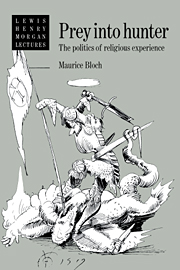6 - Millenarianism
Published online by Cambridge University Press: 15 December 2009
Summary
In the previous five chapters I have been concerned to give a detailed description of the symbolism of rituals which construct rebounding violence. In focusing on the coherence of this structure across different cultural systems, I may have given the misleading impression that the system is itself without tensions and strains. In fact, the truth is very different. These phantasmagoric corporate institutions do not create their claims to permanence and immortality without an effort and conflict which is itself often a violent one. Rituals are not always straightforward and convincing to all their participants; nor are the sociological results of these rituals of authority and of aggression easily predictable.
The purpose of this chapter and the next is to correct this impression of over-coherence. When we look at the rituals more from the point of view of the individuals concerned and from the point of view of their own experience, or when we consider the history of specific political systems at specific moments, it becomes clear that the process does not necessarily go smoothly or predictably. In ritual, in fact, the meanings conjured up are always on the point of faltering.
The study of public rituals does not normally enable the anthropologist to record such experiential uncertainty. There are two main reasons for this. First, anthropologists usually feel that they have enough on their hands recording and interpreting the main thrust of the proceedings without also having to cope with the finer nuances expressed in the behaviour of individuals. Secondly, rituals are occasions on which such individual doubts are not usually in evidence since, in ritual, the behaviour of the participants is as if orchestrated by a shared score.
- Type
- Chapter
- Information
- Prey into HunterThe Politics of Religious Experience, pp. 85 - 98Publisher: Cambridge University PressPrint publication year: 1991

